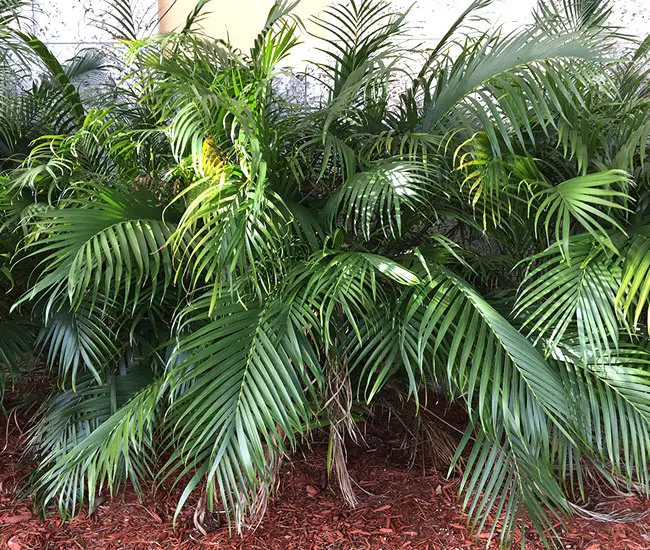
The Cat Palm Tree, scientifically referred to as Chamaedorea cataractarum, shares notable similarities with the Areca Palm and Kentia Palm. It’s a captivating trunkless palm that frequently finds a place as an indoor houseplant.
A popular landscaping combination often includes the Cat Palm alongside the Christmas Palm and Bismarck, creating an appealing ensemble. Remarkably, this palm exhibits cold hardiness, enduring temperatures as low as 25°F.
Quick Facts:
| Scientific name: | Chamaedorea cataractarum |
| Common names: | Cat Palm, Cascade Palm, Cataract Palm. |
| Origin: | Native to Southeastern Mexico. |
| Growth Rate: | Slow to Moderate. Up to 5 – 10 ft tall and 5-10 ft wide. |
| Cold Tolerance: | USDA Zones 9b (25 – 30 F) to 11 (above 40 F). |
| Light Req: | Partial shade |
| Water Req: | High |
| Soil Req: | Widely adaptable. |
| Fruit: | Yes. Yellow. Not edible. |
| Propagation: | By seeds, germinating over several months. |
Identifying Characteristics of the Cat Palm
This palm presents itself as a dense cluster of slender, green, cane-like leaf stems. Adorning these stems are pinnate, feather-shaped leaves, each reaching a length of approximately 1 foot. Each leaf boasts an impressive 30 to 50 narrow leaflets, evenly spaced along the blade.
Flowers and Fruits of the Cat Palm
In early spring, the Cat Palm graces us with vibrant yellow flowers that emerge on branched inflorescences. Intriguingly, male and female flowers are situated on separate stalks within the same group of plants.
Once pollination occurs with the male flowers, the female flowers transition to a brilliant orange hue as the seeds mature. The fruit is dark green, ovoid in shape, shiny, and measures about 1/2 inch in diameter, ultimately turning black when fully ripe.
Caring for the Cat Palm
The Cat Palm Tree can withstand cold temperatures down to 25°F and flourishes within USDA Zones 9b (with temperatures ranging from 25 to 30°F) to 11 (above 40°F).
It prefers shade or partial shade and thrives best in well-drained soil with consistent moisture. In its natural habitat, it often grows in proximity to streams and rivers.
Maintenance of the Cat Palm is hassle-free, requiring occasional trimming of old leaves. To safeguard against nutritional deficiencies, it’s advisable to apply a high-quality palm fertilizer with a continuous-release formula twice a year during the growing season.
Propagation of the Cat Palm is accomplished through seeds and dividing, offering various options for expanding your collection of these charming palms.
Cat Palm Pictures
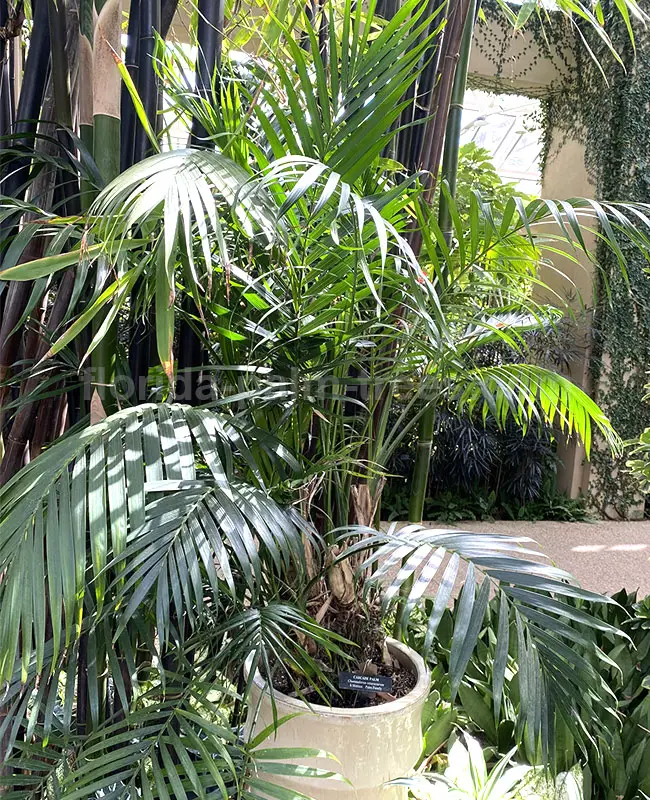
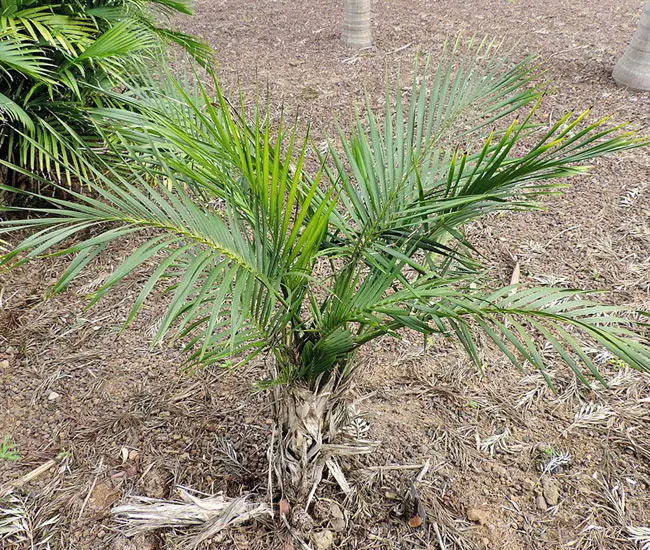
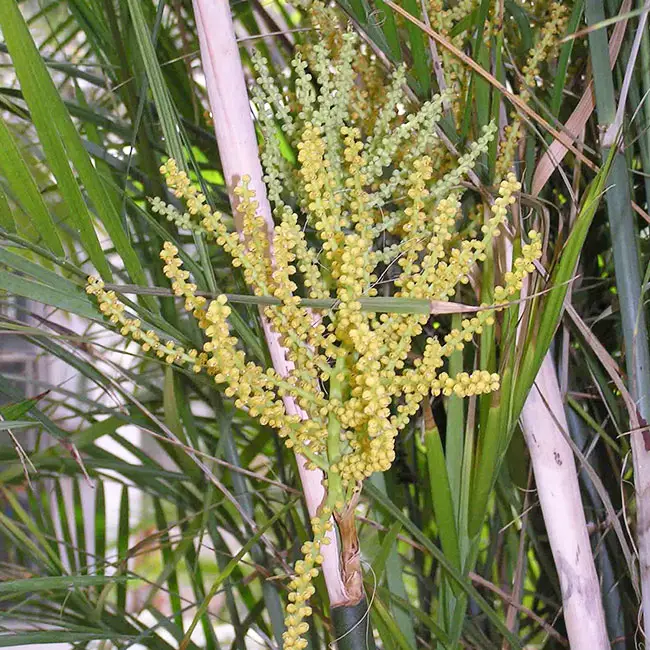
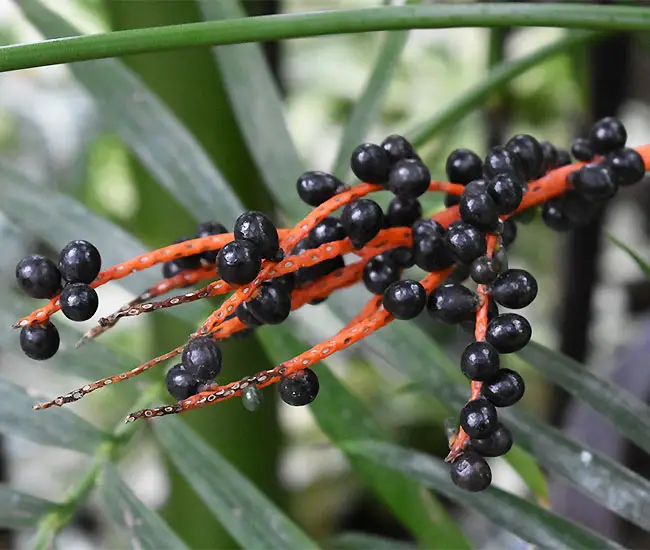
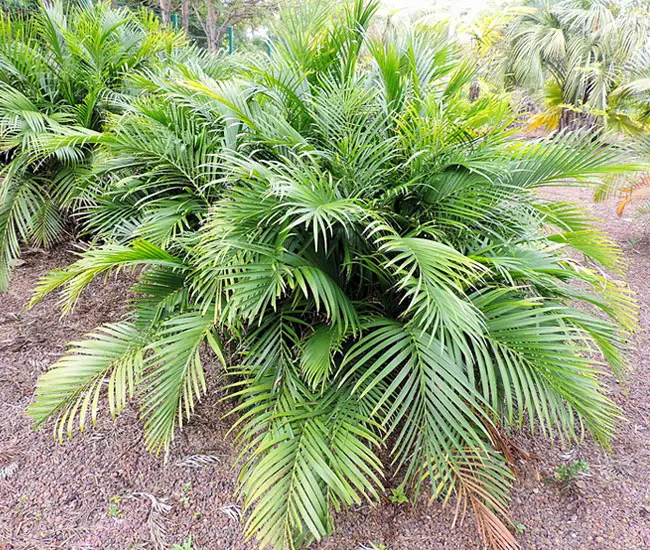

Hello:
Does its name has to do anything with Cat because my Cat eats its leaves.
No. It has nothing to do with cats.
Cat Palm is short for Cataractrum Palm.